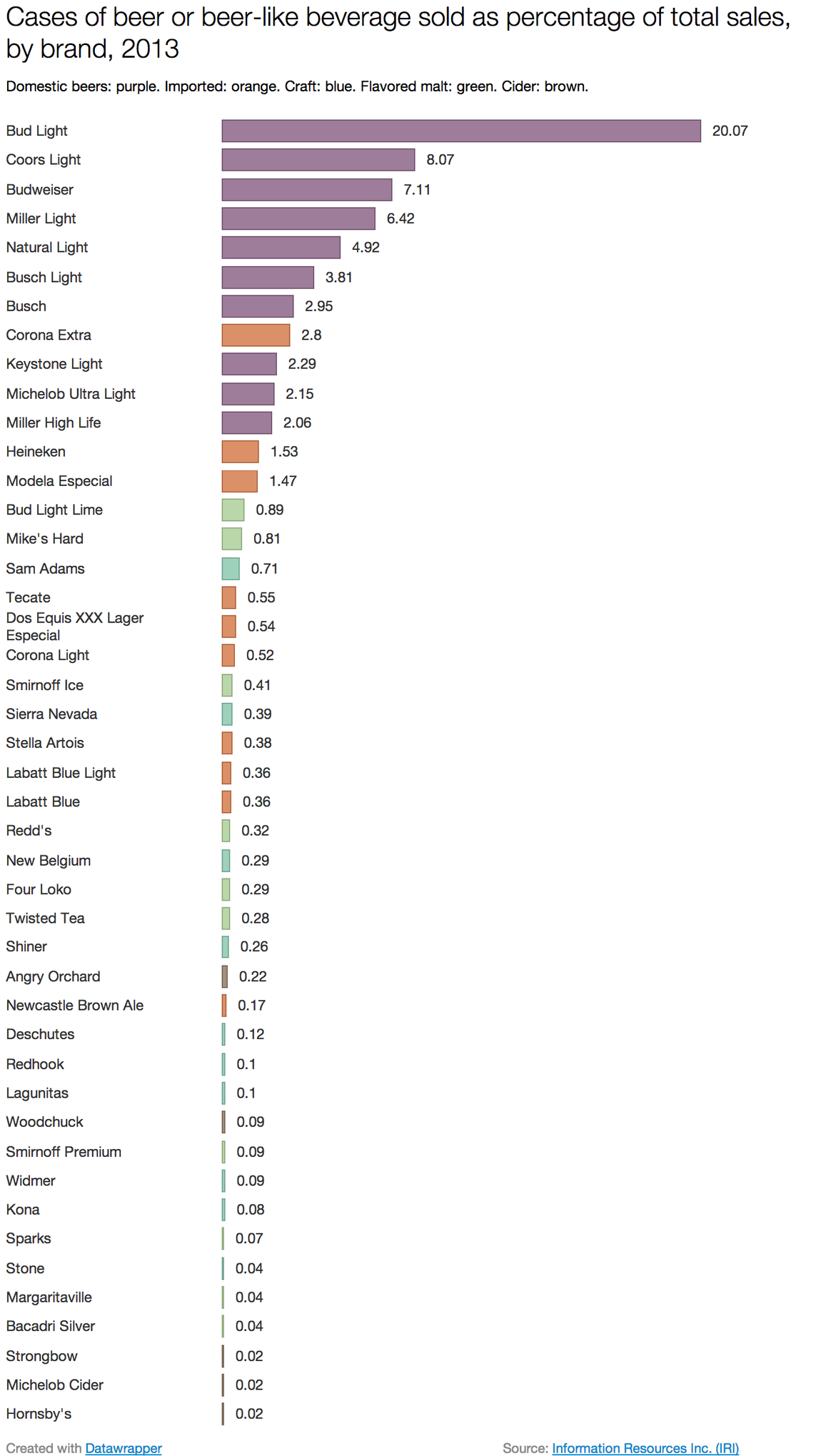It doesn't surprise me that crap beer (and Bud Light in particular) dominate what we buy, it is how far ahead they are from anything of quality. Maybe it's because I have lived in several places with very good craft brew scenes, but I am still amazed at how small a fraction of the sum total of the craft/micro brewed beers are of the total consumed--it's pretty damned close to 100% of what I, and many of my friends/family buy but it's less than 5% of the total [volume] purchased in the US.
I think what is happening is the confluence of marketing with low-income/poverty and [borderline] alcoholism--maybe I should call it "partying". It has to be the combination, because if it was just poverty and "partying" then Natural Light, Keystone Light, PBR, and High Life would all score higher (they're all about the same quality as Bud Light, but cheaper).
Note that Sam Adams to the rest of the craft beer is similar to Bud Light to all beers. Also, I may have mentioned, but Yuengling seems to be missing from the list. Also, too, I wouldn't consider Yuengling craft, nor Shiner, and Sam Adams is on the edge, but they do enough experimentation for me to still consider them craft...not that they give two shakes. Also, also, too, I'm kinda surprised that Kona and Stone are big enough to show up but Dogfish and Rogue aren't...the Yuengling thing makes me wonder a bit at the completeness of the list.
